iPhone 14 Pro Max vs iPhone 14 Plus: Which one's the best large iPhone?

Intro
The iPhone 14 launch marked a significant upheaval for the Apple iPhone lineup when it was announced in September 2022. For one, it saw the end of the road for the iPhone mini and introduced a new large-sized iPhone 14 Plus.
With the arrival of the iPhone 14 Plus, Apple finally allowed consumers to get a hold of a large iPhone that is not too expensive, albeit it is less advanced than the range-topping iPhone 14 Pro Max crown jewel. Previously, you only had one large AND expensive model, the Pro Max, while the rest, including the iPhone 13 and iPhone 13 mini, simply couldn't match the better battery life and larger display area.
As of 2025, these two are already old and have been superseded by both the iPhone 15 and iPhone 16 generations, both of which have vastly improved both the Plus and the Pro Max formula. Still, the iPhone 14 generation devices are still viable alternatives, and if you're already using one of those, there was never a reason to upgrade.
So, how do the iPhone 14 Plus and iPhone 14 Pro Max compare, and are they still viable alternatives in 2024? Should you bother buying one, and which one, or should you go with the iPhone 15 Plus or iPhone 15 Pro Max?
Read more:
| iPhone 14 Pro Max | iPhone 14 Plus |
|---|---|
| Display 6.7-inch Super Retina XDR OLED, 120Hz ProMotion Always-On Display | Display 6.7-inch Super Retina XDR OLED, 60Hz |
| Chipset Apple A16 Bionic | Chipset Apple A15 Bionic |
| Camera 12MP wide 12MP ultrawide 12MP 3X telephoto 12MP front TrueDepth with autofocus | Camera 12MP wide 12MP ultrawide 12MP front TrueDepth |
| Storage options 128GB, 256GB, 512GB, 1TB | Storage options 128GB, 256GB, 512GB |
| Price at launch From $1,099 | Price at launch From $899 |
Table of Contents:
- iPhone 14 Pro Max vs iPhone 13 Pro Max
- iPhone 14 Pro Max vs iPhone 14 Pro
- iPhone 14 Plus vs iPhone 14
- iPhone 16 Pro Max vs iPhone 14 Pro Max
- iPhone 16 Plus vs iPhone 14 Plus: Is it time to upgrade?
Design and Display Quality
Same size, but very different properties
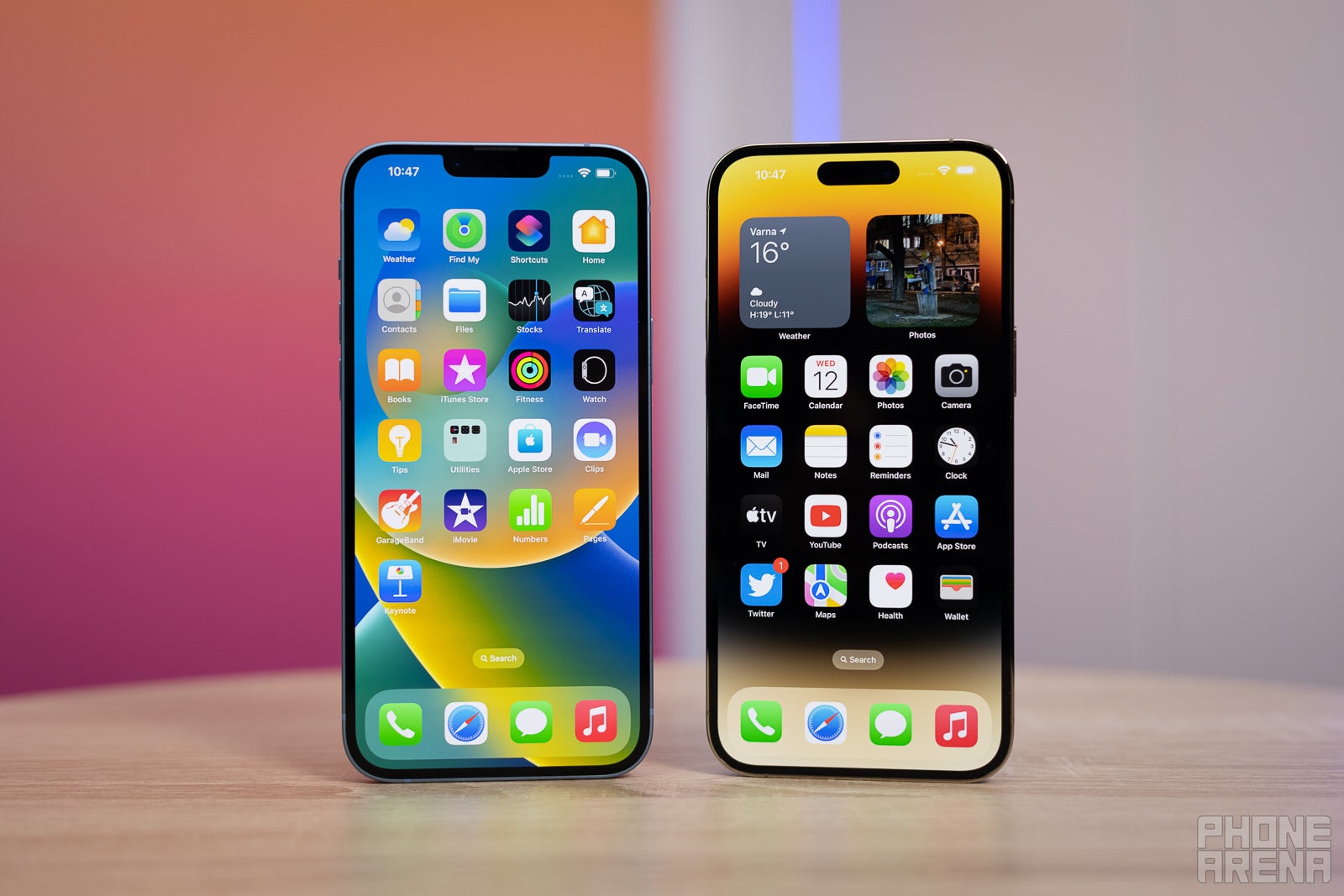
The iPhone 14 Pro Max and the iPhone 14 Plus are two of the largest iPhones available out there, screens for days! (Image credit - PhoneArena)
Generally, the iPhone 14 Plus and the iPhone 14 Pro Max share the same 6.7-inch display footprint, making them the largest new iPhones available. Both the iPhone 14 Pro Max and the iPhone 14 Plus mostly share the same general design, which in itself is mostly similar to the iPhone 12 Pro Max and 13 Pro Max. There are some very notable differences, though.
This year's Pro models looks vastly different from their predecessors when it comes to the frontal design. With two punch-holes in the form of an "i", the iPhone 14 Pro Max employs what Apple calls a Dynamic Island, a dynamic area around the cutouts that displays contextually aware and persistent notifications, alerts, and prompts. It's Apple's way of truly embracing the punch-hole and not being afraid to use the newly claimed design element to its full potential.
Meanwhile, it wouldn't be an overstatement to say that the iPhone 14 Plus is just a blown-up version of the iPhone 14 and, in extension, the iPhone 13. It uses the same aluminum design and slim notch that was debuted on the iPhone 13-series, but aside from that, it's a relatively standard-looking iPhone.
The iPhone 14 Pro Max is available in Space Black, Silver, Gold, and Deep Purple. The phone utilizes Ceramic Shield front glass and textured matte glass at the back, with stainless-steel design. Meanwhile, we have the iPhone 14 Plus, which is available in Midnight, Purple, Starlight, Product (RED), Blue, and Yellow (new as of March 2023) and is made of Ceramic Shield front, Glass back, and aluminum design. Both phones are IP68-certified.
Read more about the iPhone 14 colors here.

Significant differences in the display areas - one has a standard notch and the other comes with a Dynamic Island (Image credit - PhoneArena)
In terms of display, both phones come with 6.7-inch OLED displays, which is plenty as far as screen real estate goes. One of the main differences between the iPhone 14 Pro and iPhone 14 Pro Max involves refresh rate. The iPhone 14 Pro Max comes with a Super Retina XDR display with ProMotion, which allows it to dynamically switch the refresh rate between 1 and 120Hz depending on the on-screen content. Of course, the faster the refresh rate, the smoother the scrolling/viewing experience, which is very rewarding.
Meanwhile, the iPhone 14 Plus comes with a standard Super Retina XDR screen that only achieves 60Hz, which makes for a slightly less pleasing experience. Don't get us wrong, there's nothing wrong with the iPhone 14 Plus' screen, it's just challenging to get excited by it once you've seen the smoother iPhone 14 Pro Max display in its full glory. The iPhone 14 Pro Max can also get much, much brighter in the right ambient conditions, which means that you will have fewer issues with legibility in, say, broad daylight.
Display Measurements:
Our lab display tests are carried out with specialized software and a professional light meter. We also try our best to limit any external sources that might affect the end results.
Another important distinct point between the two phones is the Always-On display functionality, which makes an appearance on the iPhone 14 Pro and the iPhone 14 Pro Max only. It dims your lock screen and displays a vague outline of your wallpaper of choice, as well as the vital clock face and any mini widgets that you might have. Apple already had a similar functionality on the Apple Watch, and it made sense to finally have it on the iPhone.
As mentioned, Face ID remains the main biometric of choice on the iPhone 14 family. Both the iPhone 14 Plus and iPhone 14 Pro Max come with the three-dimensional facial recognition functionality on deck, which can be used for both unlocking the phone, and authorizing app installations and online purchases.
Performance and Software
New chip for the iPhone 14 Pro Max, but a well-known unit in the iPhone 14 Plus
Another major difference between the iPhone 14 Pro Max and the iPhone 14 Plus is the chipset powering each phone. The iPhone 14 Pro Max gets the newer generation silicon, the 4nm Apple A16 Bionic chipset, while the iPhone 14 Plus relies on iPhone 13 Pro/Pro Max's chip from last year, the 5nm Apple A15 Bionic chip with a 5-core GPU on board. This marks the first time that Apple differentiates its more premium models with a newer chipset and throws a bone to the affordable iPhones with last year's processor.
Mind you, the Apple A15 is still among the best all-around mobile chips, so there's nothing wrong with reusing it another year. Still, many could be irked by Apple's decision, as the company has always used its newest chipset across all of its contemporary devices. Speaking of the Apple A16 Bionic, it's manufactured on a 4nm node and thus offers some efficiency gains in comparison with the A15 Bionic, which relies on a larger (and older) 5nm manufacturing process.
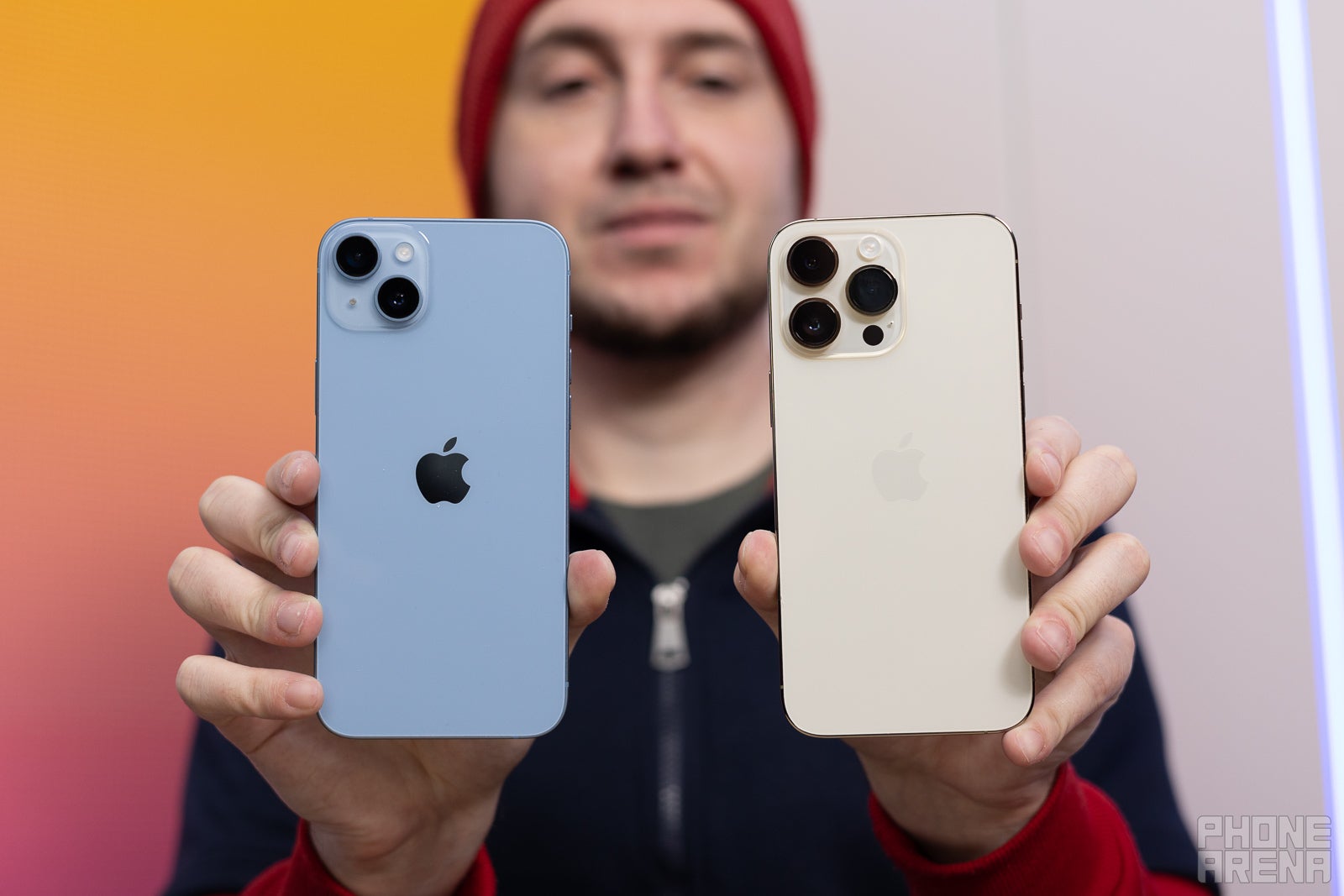
Performance is top-notch on both devices, but the iPhone 14 Pro Max definitely has the upper hand here (Image credit - PhoneArena)
How does all of this translate in real-life performance?
You shouldn't be able to notice a difference. That said, if you really want the best on paper, you will have to go with the iPhone 14 Pro Max, though the iPhone 14 Plus won't be much behind. If anything, it's still performing better than most of the contemporary Android phones out there.
Apple has successfully created a performance rift between its affordable and more premium phones. The A16 Bionic definitely beats the A15 inside the iPhone 14 Plus, but that only matters if you care about synthetic benchmarks.
Performance Benchmarks:
We do our performance benchmark testing at room temperature and with no cases on the phones so that the environment is as close to real-life usage as possible and so that there is nothing that might affect the phones' ability to cool itself.
In terms of memory, both phones come with 6GB of RAM. There are some important differences, however: iPhone 14 Pro Max comes with the much faster LPDDR5 type of RAM, while the iPhone 14 Plus relies on the slightly slower LPDDR4X RAM, courtesy of the A15 Bionic chip. Overall, this should boost performance.
These two phones both currently run iOS 18 will be coming to the two devices in September, right along the iPhone 16 series. iOS 18 is pretty big on major features, with improvements to customization, revamped stock apps, and more, but the most important new feature is Apple Intelligence. Sadly, however, Apple Intelligence is not coming to the iPhone 14 Pro Max or the iPhone 14 Plus––Apple will only ship Apple Intelligence on the newer iPhone 15 Pro, iPhone 15 Pro Max, and the iPhone 16 range.
When it comes to software updates, iPhones receive more than five years of software updates. Having this in mind means that both the iPhone 14 Plus and iPhone 14 Pro Max will certainly be up-to-date until 2027 or 2028, which is the best the mobile industry currently has to offer.
Both iPhone 14 Pro Max and iPhone 14 Plus start at 128GB storage, but are also available with 256 and 512GB of native storage. This is where the iPhone 14 Plus hands in the towel, but true to its nature, the iPhone 14 Pro Max gives us a 1TB option, more than enough for even the heaviest of power users.
The iPhone 14 family now also supports Satellite SOS connectivity, allowing iPhone users to connect while in areas that are outside regular cell coverage. With this new connectivity feature, the iPhone 14 will communicate with a satellite hundreds of miles above and allow you to report an emergency.
Sadly, standard texting and other types of data throughput are not supported due to the limited bandwidth. Still, you can send simple short messages and hopefully get emergency services to help you out. You can also share your location with your family via Find My even though you are out and about in the wilderness.
Camera
Triple versus double, the difference is clear
Apple introduced a new, considerably larger 48MP primary camera sensor, which is exclusively available on the top-tier iPhone 14 Pro and Pro Max flagships. Thanks to quad-pixel binning, this sensor combines the raw data from four pixels into one to theoretically achieve sharper detail, superior dynamic range, and low-light sensitivity.
The latter is further aided by Apple's new Photonic Engine, a term depicting an enhanced new image pipeline that dramatically improves low-light photos. By default, the iPhone 14 Pro Max camera still outputs 12MP images, but you can opt to take full 48MP ProRAW images, which routinely weigh in above 90MB.
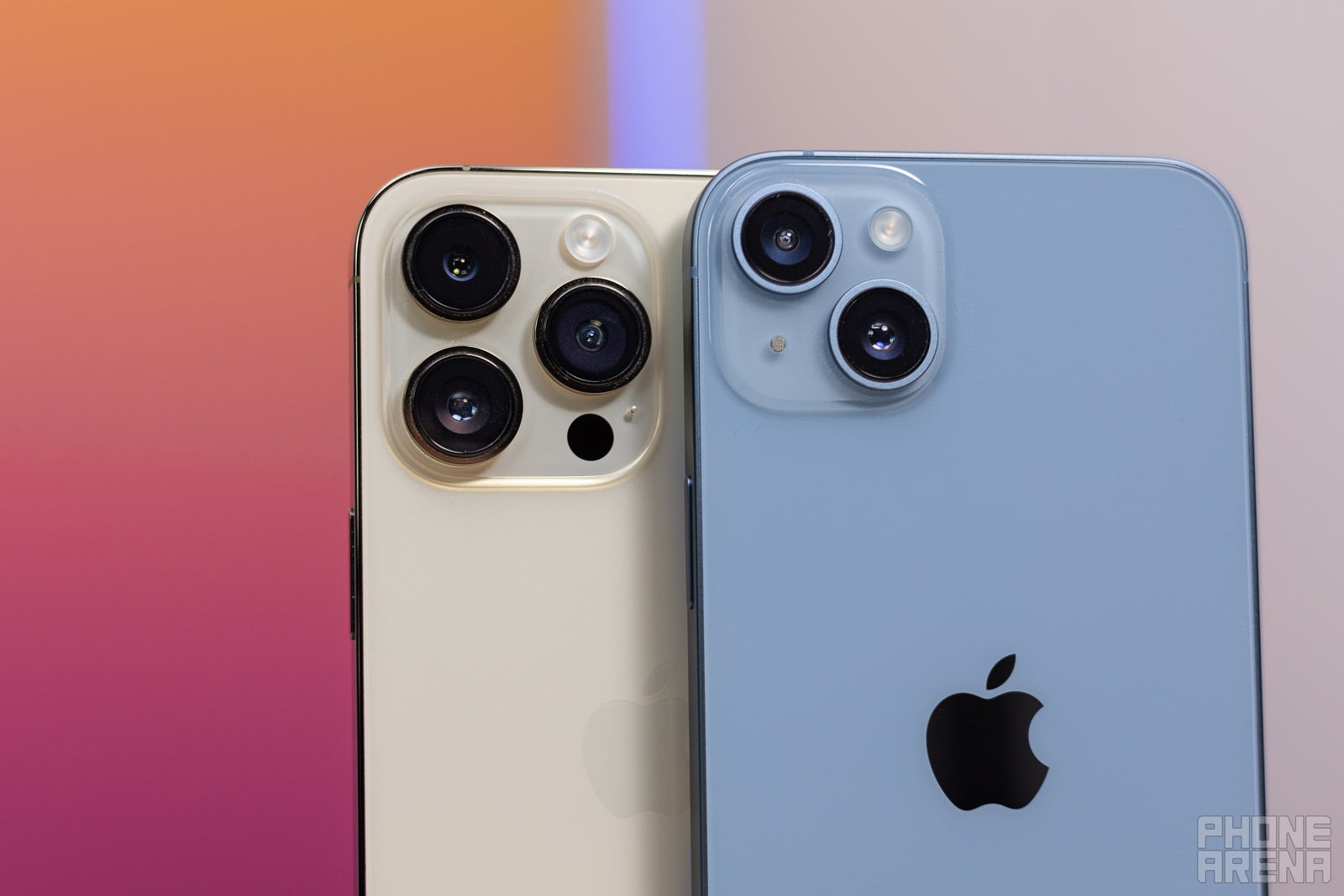
There's one extra telephoto camera on the iPhone 14 Pro Max, and it surely makes a difference in many scenarios (Image credit - PhoneArena)
The iPhone 14 Pro Max has a triple camera system, similarly to all of its predecessors: the 48MP wide-angle camera is joined by a ultra-wide and a 3X telephoto lens in order to achieve maximum versatility. Both weigh in at 12MP. The 49MP camera sensor has also allowed Apple to throw in a 12MP 2X telephoto mode that uses the main camera sensor and benefits from its wider aperture. You can use this software camera mode both in regular photo and portrait modes, so that you achieve a zoomed, but a more natural field-of-view.
Meanwhile, the iPhone 14 Plus uses the same camera setup found on the iPhone 14. A 12MP main wide-angle camera is joined by a 12MP ultra-wide one, with the same Photonic Engine and other machine-learning goodies, like Smart HDR 4, Deep Fusion, Photographic Styles, and more. Overall image quality is slightly better than the iPhone 13, which can be mostly attributed to the use of the Photonic Engine.
According to our camera benchmark scores above, the iPhone 14 Pro Max pulls ahead in both photo and video scores. We conduct both of these tests in house to gauge each phone's photographic abilities and benchmark it against its peers.
And here's how the iPhone 14 Pro Max specs and iPhone 14 Plus specs differ. You can also check out our iPhone 14 Pro Max vs iPhone 14 Plus dedicated specs comparison.
The iPhone 14 Pro Max started at $1,099 for the 128GB version, while the range-topping 1TB storage version went for $1,599, quite the lump of money. At the same time, the iPhone 14 Plus keeps things more grounded (and affordable) with a starting price of $899 for the 128GB version and goes up to $1,099 for the 512GB model.
Finally, both devices share a new 12MP FaceTime selfie camera with autofocus and fast, f/1.9 aperture. If anything, it also supports Cinematic mode at up to 4K HDR@30fps, if that matters to you.
In terms of image quality, one thing is immediately obvious — the higher-res camera of the iPhone 14 Pro Max definitely has way lot more data to work with, which leads to more detailed images, with more information in the shadowy areas. Aside from that, both phones exude that well-known iPhone camera look, with similar, consistent color science and dynamics.
Daytime main camera samples
In low-light scenarios, the iPhone 14 Pro Max pulls ahead, but the differences are by no means as stark as we'd like them to be. Definitely room for improvement on the 48MP camera's account in the future.
Low-light camera samples
The wide-angle camera does a fairly similar job on either device. You get good dynamics, detail, and overall a very usable photo.
Ultrawide camera samples
In terms of zoom, we'd recommend trying to zoom with the iPhone 14 Plus. It maxes out at 5X, which is a rather pathetic digital zoom capability. At the same time, the iPhone 14 Pro Max is a much more capable telephoto machine, with a maximum of a 30X hybrid zoom. At 3X, the phone switches to its dedicated telephoto camera and delivers outstanding results, whereas the iPhone 14 Plus simply crops out from its main camera. No contest, really—the iPhone 14 Pro Max wins this one by a landslide.
Zoom samples
Finally, when it comes to selfies, both phones have scored improved selfie cameras with autofocus, which means better selfies across the board. Portraiture is good on both phones, with good background separation.
Selfie samples
Battery Life and Charging
Best battery on any iPhone ever (so far)
Who's leading the battery life test between these two battery champs?
When we discuss the iPhone 14 Plus and the iPhone 14 Pro Max, we are dealing with battery champs. You can safely expect either of Apple's two behemoths to last you a long time, as the two have the largest batteries among all new iPhones in the iPhone 14-lineup. With a 4,323mAh battery on the iPhone 14 Pro Max and a 4,325mAh one on the iPhone 14 Plus, one could go all-in that both will have a pretty similar battery life, right?
Normally, yes, but this is where the differences in display technology and chipset efficiency come into play.
PhoneArena Battery Test Results:
On the PhoneArena browsing battery test, which involves automated web surfing and scrolling over a Wi-Fi network at 200 nits of pre-set screen brightness, the iPhone 14 Pro Max ekes out ahead of the iPhone 14 Plus by a few minutes, with both phones dangerously close to the 11-hour mark.
The spread is mostly similar in the dedicated PhoneArena 3D gaming test, where the iPhone 14 Pro Max lasts longer than the iPhone 14 Plus. Things are entirely different in the PhoneArena video streaming test, where the iPhone 14 Plus lags way behind the iPhone 14 Pro Max champ.
The spread is mostly similar in the dedicated PhoneArena 3D gaming test, where the iPhone 14 Pro Max lasts longer than the iPhone 14 Plus. Things are entirely different in the PhoneArena video streaming test, where the iPhone 14 Plus lags way behind the iPhone 14 Pro Max champ.
Our battery life tests for web browsing and gaming are done at a 60Hz refresh rate. Only the web browsing battery test is done at 120Hz, and that is only when both phones support it.
In terms of charging, Apple has adorned the iPhone 14 Pro Max with 27W wired charging and the iPhone 14 Plus with 20W wired charging, as that's what the charging situation looked like on the iPhone 13 Pro Max and iPhone 13, respectively. Both have 15W MagSafe wireless charging, but no USB Type-C; this one is coming later this year with the iPhone 15 series.
How quickly does Apple's big new iPhone charge? Well, it takes upwards of two hours to fully top up the iPhone 14 Plus, noticeably longer than the iPhone 14 Pro Max, which charges faster but still loses to multiple Android rivals.
We use the recommended chargers from the phone manufacturer when doing our charging tests. We also start from 0%, and since most users don't wait until their battery is completely dead, that means you probably won't have to wait as long as the numbers are showing above.
Specs Comparison
| Phone | iPhone 14 Pro Max | iPhone 14 Plus |
|---|---|---|
| Dimensions | 6.33 x 3.05 x 0.31 inches (160.7 x 77.6 x 7.85 mm) | 6.33 x 3.07 x 0.31 inches (160.8 x 78.1 x 7.8 mm) |
| Weight | 240gr | 203gr |
| Display | 6.7-inch Super Retina XDR OLED ProMotion (1-120Hz) | 6.7-inch Super retina XDR OLED (60Hz) |
| Processor | Apple A16 Bionic hexa-core | Apple A15 Bionic w/ 5-core GPU |
| Memory & Storage | 6GB LPDDR5; 128GB, 256GB, 512GB, 1024GB | 6GB LPDDR4X*; 128GB, 256GB, 512GB |
| Rear cameras | Main: 48MP f/1.78 24mm Ultra-wide: 12MP 13mm, ƒ/2.2 2X Telephoto mode: 12MP 48mm f/1.78 3X Telephoto: 12MP 77mm f/2.8 | Main: 12MP f/1.5 26mm Ultra-wide: 12MP 13mm f/2.4 |
| Front camera | 12MP f/1.9 | 12MP f/1.9 |
| Battery size | 4323mAh | 4325mAh |
| Charging speeds | 20W wired, 15W MagSafe | 20W wired, 15W MagSafe |
| Price | From $1,099 | From $899 |
As seen in the table above, the differences are mostly found in the camera, display, and performance section, which kind of justifies the higher price of the iPhone 14 Pro Max versus the iPhone 14 Plus.
Summary and Final Verdict
So, as established in this comparison, the main differences between the iPhone 14 Pro Max and iPhone 14 Plus definitely tip the scales in favor of the more premium iPhone 14 Pro Max, despite its more premium price. Its high-refresh display, faster chipset, more storage, and improved camera system are the main selling points against the similarly sized, but way less impressive iPhone 14 Plus.
The price increase for the iPhone 14 Pro Max could be justified by all the new features that will be included, but don't be so quick to disregard the iPhone 14 Plus as well. Due to its large size and fairly affordable price in comparison with the Pro Max version, it could be the potential bestseller among all iPhone 14 models, especially if you don't really like the new Dynamic Island or are unconvinced by the 48MP camera.
More affordable, but also way less appealing than the iPhone 14 Pro Max, and the belayed launch has also seemingly affected the iPhone 14 Plus in a rather unfortunate way. Potential adopters have either already gone for the more premium iPhone 14 Pro Max or any other of the new iPhone 14-series, and Apple has reportedly cut down the iPhone 14 Plus production already. Not a good sign.
Still, if you really want the best of the best, there's no way around it—you simply have to go with the iPhone 14 Pro Max. In all other use cases, even a regular iPhone 14 would do you just fine.
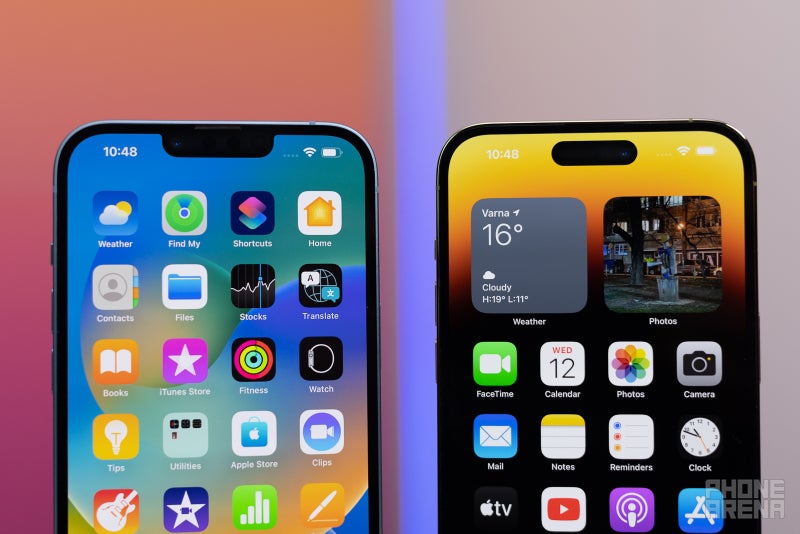


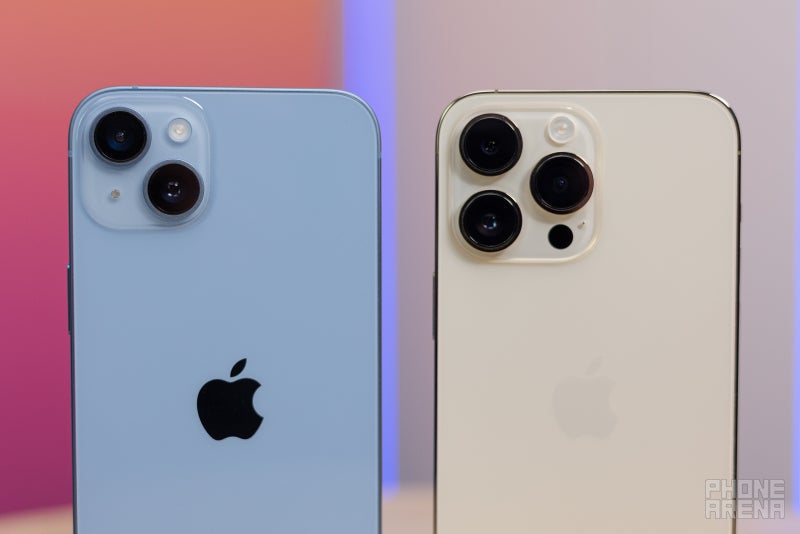


















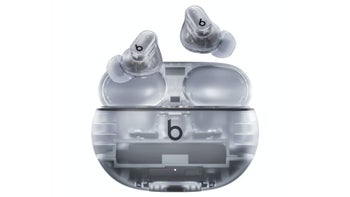






Things that are NOT allowed: